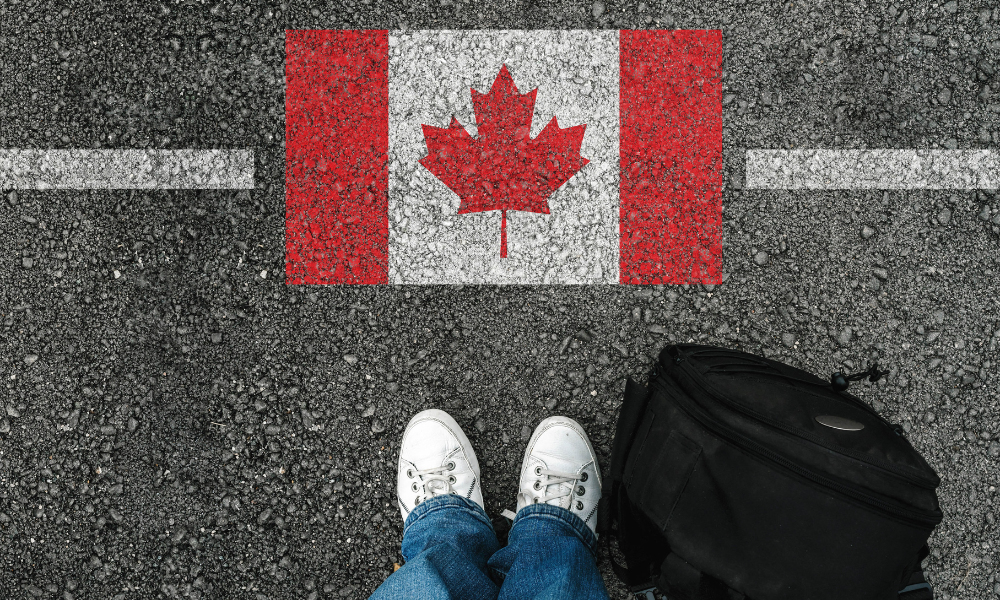In 1957, a prominent American group denounced homosexuality as “socially heretical or deviant,” and determined that laws against it posed no constitutional problems. That organization: the American Civil Liberties Union. For years thereafter, “sodomy” was a criminal offence in every state.
In 2012, the president of the United States spoke out in favor of same-sex marriage, and his party endorsed it in its official platform. Gay marriage is legal in six states and Washington, D.C., and many other American states have allowed “civil unions” — marriage in all but name — for same-sex couples. One of the year’s biggest controversies came when the president of a fast-food restaurant chain reaffirmed his company’s support for anti-gay-marriage groups, leading to boycotts (and counter-boycotts) across the country.
Gays and lesbians in the United States have come a long way in a short time (yet are still well behind Canada and many other nations). But with progress, there has been a massive backlash from conservative, religious Americans, who consider homosexuality sinful and officially recognized same-sex unions as a threat to the institution of marriage itself.
While the Democratic Party has become more accommodating of same-sex marriage, most of the Republican Party (with a few surprising exceptions like Dick Cheney) is adamantly opposed. While some states have legalized same-sex marriage, even more have adopted constitutional amendments defining marriage as between a man and a woman. While gay-rights activists have had some success in state courts and legislatures, voters have shot down the idea of same-sex marriage every time it has been put to a popular referendum — even in progressive California.
In this engrossing book, Harvard law professor Michael J. Klarman tells the history of the legal and political campaigns for same-sex marriage. But he also examines the tactics used by some gay-rights activists and organizations in pressing for equal marriage, and whether the resulting backlash has slowed progress toward gay and lesbian equality in other key areas.
The idea that gay and lesbian couples should be allowed to legally marry, with all of the state-sponsored benefits flowing therefrom, seemed like fantasy just 20 years ago. Gay Americans only began leaving the closet and demanding equality in the ’60s and ’70s, and during the ’80s and early ’90s they focused their attention on pressing issues like non-discrimination laws and the fight against AIDS.
That’s why a 1993 Hawaii Supreme Court decision, Baehr v. Lewin, caused an uproar. Baehr held that the limitation of marriage to a man and a woman was discriminatory, and as a result Hawaii became the first jurisdiction in the world where same-sex marriages were officially recognized. The backlash was almost instantaneous, as even liberal Hawaiians were not ready to take this massive step forward. After years of legal and political wrangling, the state constitution was amended to limit marriage to opposite-sex couples. Other states made similar moves, and prominent gay-rights organizations (who had not supported the Baehr litigation, correctly determining it would be too much too soon) feared they were worse off than when they started.
The floodgates had opened, however. State courts in Vermont and Massachusetts also ruled that bans on same-sex marriage were unconstitutional, though the Green Mountain State ultimately settled on civil unions. Then came other New England states. Then came California. All the while, as ordinary Americans got to know more of their gay and lesbian neighbours, friends, and relatives, support for same-sex marriage continued to grow. Support for civil unions, once a radical idea in its own right, became a fallback position for conservatives (even Rush Limbaugh!) who continued to oppose gay marriage. Earlier this year, President Barack Obama finally determined that it was the right time to come out publicly in support of marriage equality — a development Klarman deemed unlikely before the next election.
Still, it continued to be two steps forward, one step back for the marriage equality movement. Voters in Maine and California chose to amend their state constitutions to ban gay marriage in response to controversial court rulings. Three Iowan supreme court judges who ruled a same-sex marriage ban unconstitutional were recalled. There is no doubt which way things are going, especially considering that younger Americans overwhelmingly support giving gays and lesbians the right to marry, but the fight isn’t close to over yet.
There is no doubt that Klarman supports same-sex marriage, but to his credit, Klarman resists the temptation to demonize its opponents. From the Closet to the Altar makes its points clearly and dispassionately, and is all the more persuasive as a result. Republicans who broke with their party to support same-sex marriage, such as the New York state legislators who voted with the Democrats to legalize it, are given their due, and divisions within the gay-rights movement are discussed in great detail.
Indeed, the point of From the Closet to the Altar is to determine whether gay and lesbian Americans are better off today, after years of emphasizing same-sex marriage, than they would have been if more incremental change had been sought. He determined that, on balance, they are — but that some serious setbacks have come about:
Heading into the 2012 elections, voters in Maryland and Washington will decide whether same-sex marriage will become legal in their respective states. The people of Maine may soon revisit their decision to ban it, too. This issue isn’t going away, and From the Closet to the Altar is essential reading for anyone who wants to catch up on the subject heading into polling season.
This November, Americans will choose between Obama, who supports the right of gays and lesbians to marry, and challenger Mitt Romney, who does not. It’s not an issue Romney and the Republicans are keen to bring up on the campaign trail, however. A few years ago, it was an effective wedge issue. Now, it’s almost an embarrassment. And that should tell you which side has the momentum.
In 2012, the president of the United States spoke out in favor of same-sex marriage, and his party endorsed it in its official platform. Gay marriage is legal in six states and Washington, D.C., and many other American states have allowed “civil unions” — marriage in all but name — for same-sex couples. One of the year’s biggest controversies came when the president of a fast-food restaurant chain reaffirmed his company’s support for anti-gay-marriage groups, leading to boycotts (and counter-boycotts) across the country.
Gays and lesbians in the United States have come a long way in a short time (yet are still well behind Canada and many other nations). But with progress, there has been a massive backlash from conservative, religious Americans, who consider homosexuality sinful and officially recognized same-sex unions as a threat to the institution of marriage itself.
While the Democratic Party has become more accommodating of same-sex marriage, most of the Republican Party (with a few surprising exceptions like Dick Cheney) is adamantly opposed. While some states have legalized same-sex marriage, even more have adopted constitutional amendments defining marriage as between a man and a woman. While gay-rights activists have had some success in state courts and legislatures, voters have shot down the idea of same-sex marriage every time it has been put to a popular referendum — even in progressive California.
In this engrossing book, Harvard law professor Michael J. Klarman tells the history of the legal and political campaigns for same-sex marriage. But he also examines the tactics used by some gay-rights activists and organizations in pressing for equal marriage, and whether the resulting backlash has slowed progress toward gay and lesbian equality in other key areas.
The idea that gay and lesbian couples should be allowed to legally marry, with all of the state-sponsored benefits flowing therefrom, seemed like fantasy just 20 years ago. Gay Americans only began leaving the closet and demanding equality in the ’60s and ’70s, and during the ’80s and early ’90s they focused their attention on pressing issues like non-discrimination laws and the fight against AIDS.
That’s why a 1993 Hawaii Supreme Court decision, Baehr v. Lewin, caused an uproar. Baehr held that the limitation of marriage to a man and a woman was discriminatory, and as a result Hawaii became the first jurisdiction in the world where same-sex marriages were officially recognized. The backlash was almost instantaneous, as even liberal Hawaiians were not ready to take this massive step forward. After years of legal and political wrangling, the state constitution was amended to limit marriage to opposite-sex couples. Other states made similar moves, and prominent gay-rights organizations (who had not supported the Baehr litigation, correctly determining it would be too much too soon) feared they were worse off than when they started.
The floodgates had opened, however. State courts in Vermont and Massachusetts also ruled that bans on same-sex marriage were unconstitutional, though the Green Mountain State ultimately settled on civil unions. Then came other New England states. Then came California. All the while, as ordinary Americans got to know more of their gay and lesbian neighbours, friends, and relatives, support for same-sex marriage continued to grow. Support for civil unions, once a radical idea in its own right, became a fallback position for conservatives (even Rush Limbaugh!) who continued to oppose gay marriage. Earlier this year, President Barack Obama finally determined that it was the right time to come out publicly in support of marriage equality — a development Klarman deemed unlikely before the next election.
Still, it continued to be two steps forward, one step back for the marriage equality movement. Voters in Maine and California chose to amend their state constitutions to ban gay marriage in response to controversial court rulings. Three Iowan supreme court judges who ruled a same-sex marriage ban unconstitutional were recalled. There is no doubt which way things are going, especially considering that younger Americans overwhelmingly support giving gays and lesbians the right to marry, but the fight isn’t close to over yet.
There is no doubt that Klarman supports same-sex marriage, but to his credit, Klarman resists the temptation to demonize its opponents. From the Closet to the Altar makes its points clearly and dispassionately, and is all the more persuasive as a result. Republicans who broke with their party to support same-sex marriage, such as the New York state legislators who voted with the Democrats to legalize it, are given their due, and divisions within the gay-rights movement are discussed in great detail.
Indeed, the point of From the Closet to the Altar is to determine whether gay and lesbian Americans are better off today, after years of emphasizing same-sex marriage, than they would have been if more incremental change had been sought. He determined that, on balance, they are — but that some serious setbacks have come about:
“On balance, litigation has probably advanced the cause of gay marriage more than it has retarded it. But such litigation has also probably impeded the realization of other objectives of the gay rights movement, and it has had significant collateral effects on politics. Because of the litigation, U.S. Senate candidates have lost their bids, state judges have lost their jobs, and the outcome of a presidential election may have been affected, which in turn has influenced the composition of the U.S. Supreme Court.”
Heading into the 2012 elections, voters in Maryland and Washington will decide whether same-sex marriage will become legal in their respective states. The people of Maine may soon revisit their decision to ban it, too. This issue isn’t going away, and From the Closet to the Altar is essential reading for anyone who wants to catch up on the subject heading into polling season.
This November, Americans will choose between Obama, who supports the right of gays and lesbians to marry, and challenger Mitt Romney, who does not. It’s not an issue Romney and the Republicans are keen to bring up on the campaign trail, however. A few years ago, it was an effective wedge issue. Now, it’s almost an embarrassment. And that should tell you which side has the momentum.







